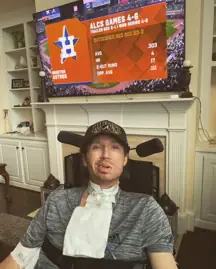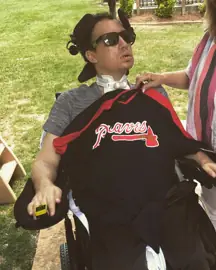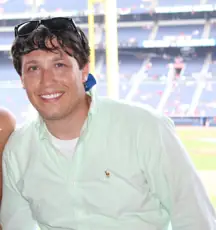Tragedy struck after a man went for a routine appointment at a chiropractor, and he is now paralyzed with locked-in syndrome.

On October 26, 2015, Jonathan Buckelew, then a 24-year-old, was attending a neck adjustment appointment when everything changed.
According to his family, the adjustment triggered a life-threatening medical emergency, with Jonathan suddenly becoming dizzy, disoriented, and unresponsive during the appointment, as per Atlanta News First.
He was rushed to North Fulton Hospital in Georgia, but despite reported warning signs, doctors missed the opportunity to save him.
Jonathan was having a severe brain stem stroke, a type of stroke that occurs in a crucial area of the brain controlling movement and vital body functions.
However, one whole day passed before his condition was recognised, and by then, he was suffering from locked-in syndrome, a rare neurological disorder that leaves a person conscious but unable to move or communicate verbally, except through eye movements.
But What Exactly Is Locked-In Syndrome?
The National Institute of Neurological Disorders and Stroke describes locked-in syndrome as a rare nervous system disorder that can be caused by traumatic brain injury, circulatory system diseases, or medication overdoses.
For someone suffering a brain stem stroke, the impact is devastating as every nerve impulse to and from the body goes through this area, potentially leading to breathing difficulties, coma, and full paralysis while retaining awareness.
The Cleveland Clinic states that most people with locked-in syndrome communicate through their eyes.
The condition does not impact a person's ability to understand conversation, and their ability to think and reason remains the same.
If the person suffers from complete paralysis, then they will be unable to feel physical pain, while those who have an incomplete form of the syndrome will feel sensations in certain areas of their body.
Sadly, there is no treatment or cure for locked-in syndrome apart from preventing further complications.
Some people will pass away shortly after developing the condition, while others have been known to live for another two decades.

In the case of Jonathan Buckelew, a Georgia court found Dr. Matthew Womack and radiologist James Waldschmidt guilty of malpractice, awarding Jonathan $75 million in damages, including $29 million for medical expenses and $46 million for pain and suffering.
Womack was ordered to pay $40 million, while Waldschmidt has since dropped his appeal, and Womack is continuing to challenge the ruling in the Georgia Supreme Court.
The lawsuit also named the chiropractor, the hospital, and neurologist Dr. Christopher Nickum, but they were not found liable.
Jonathan now communicates only through eye movements and a keypad he operates with his nose.

His parents, Jack and Janice Buckelew, have transformed their home into a 24/7 care facility with the support of a team of nurses, turning their garage into a medical supply hub to keep up with his care needs.
“We do work really hard to keep at least two months ahead on the supplies," Jack shared. "We created an ICU, honestly."
Despite their efforts, the emotional toll remains heavy for the family.
